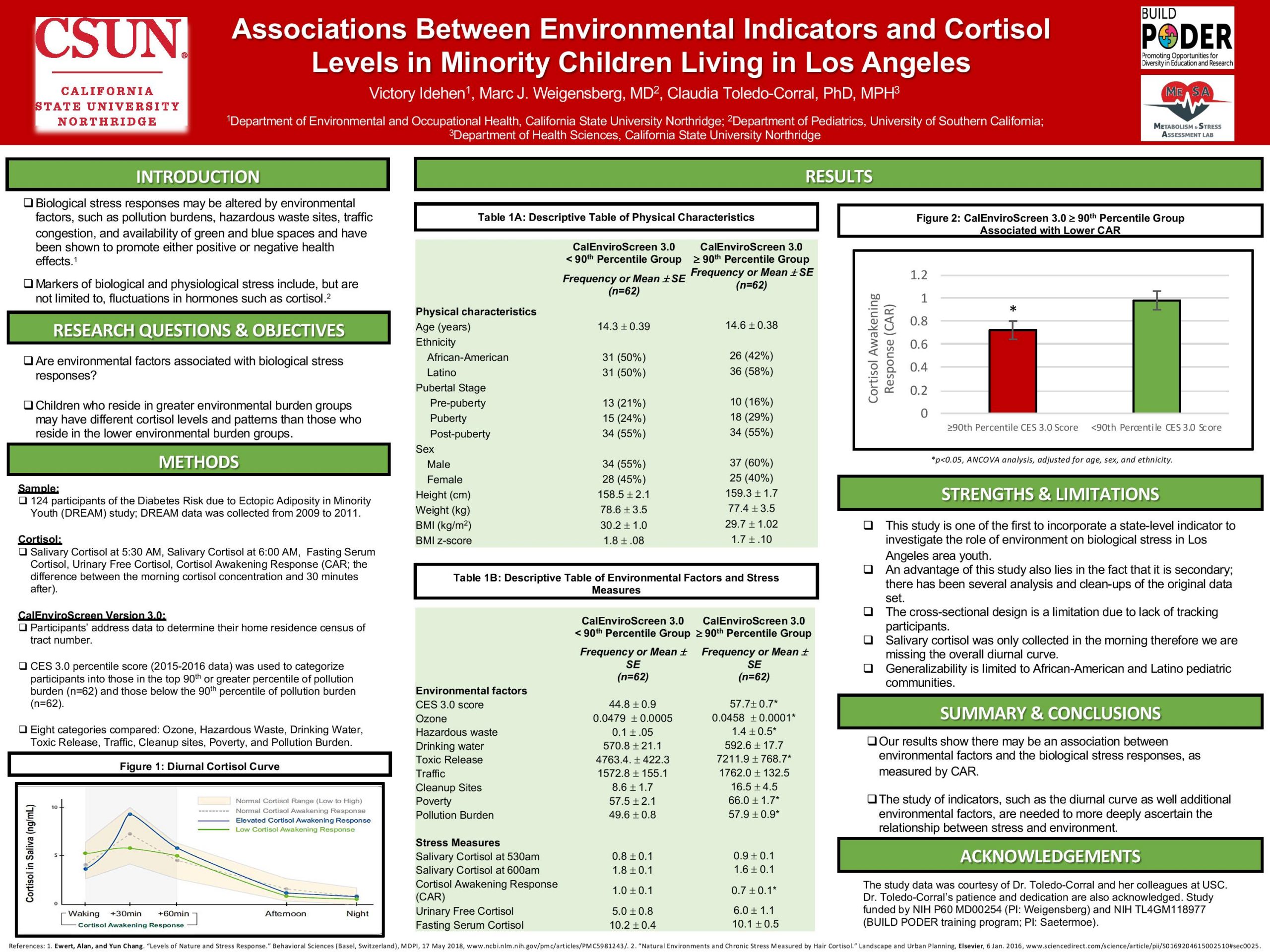Victory A. Idehen, High school diploma, Environmental andOccupational Health, California State University, Northridge,Northridge, CA, Marc Weigensberg, MD, Pediatrics, University ofSouthern California, Los Angeles, CA, Claudia M. Toledo-Corral,PhD, Health Sciences, California State University, Northridge,Northridge, CA
Background: Poor physical environments have been shown to be associated with a variety of health conditions, such as obesity and diabetes. However, the role of environmental stressors as they relate to biological stress responses has been understudied. The purpose of this study is to examine if greater pollution burden, as measured by the CalEnviroScreen (CES) tool, is associated with an altered biological stress response known as the cortisol awakening response.
Methods: By analyzing the Diabetes Risk due to Ectopic Adiposity in Minority Youth (DREAM) data, we collected data on Salivary Cortisol at 5@30 AM and 6@00 AM, which was used to calculate the cortisol awakening response (CAR). CalEnviroScreen Version 3.0 was used for overall environmental burden scores (includes: Ozone, Hazardous Waste, Toxic Release, Poverty, and overall Pollution Burden). The less environmentally burdened group had CalEnviroScreen scores less than 90th percentile based on a number of unique environmental burdens (CES percentile < 90th). The greater environmentally burdened group had CalEnviroScreen scores greater than or equal to the 90th percentile based on a number of unique environmental burdens (CES percentile > 90th).
Results: There were no differences in age, ethnicity, and gender by CES burden group (CES percentile < 90th group: age was 14.3 ± 0.39 years, ethnicity 50% African-American and 50% Latino, and gender 55% male vs. the CES percentile > 90th group the distribution of age was 14.6 ± 0.38 years, the distribution of ethnicity was 58% Latino, and the distribution of gender was 60% male). Adjusted for these variables, the CAR was shown to be lower in the CES percentile > 90thgroup, than in the CES percentile < 90th group (0.723 mg/dL vs. 0.982, p<0.05).
Conclusion: Those in the higher environmentally burden group had a more blunted CAR compared to the less environmentally burdened group. In future studies, these results may bring attention to the importance of stress related health issues and the impacts of environmental burdens on human health.
*This poster was presented at The American Psychosomatic Society annual meeting. The sample size reflects that of March 2020.
